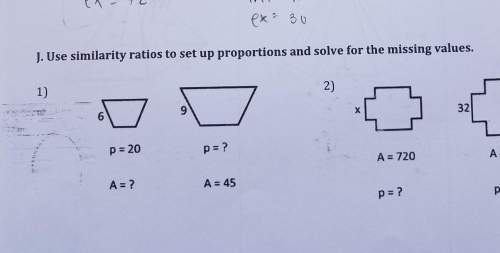
Mathematics, 10.10.2019 18:00 alvarezmrs1913
In the megamillions lottery a player buys a $1 ticket and picks five numbers from the numbers 1 to 70. the lottery has a bin with seventy white balls, each with a number from 1 to 70. the lottery picks five balls from the bin with the white balls. if the five numbers the player picked match the numbers drawn on the five white balls then the player wins $1,000,000 (in most states, but not including california, where the rules are different). in addition, the player picks one mega number from the numbers 1 to 25. the lottery has a bin with twenty-five gold balls, each with a number from 1 to 25. the lottery picks one gold ball from the bin. if the player matches all five numbers on the white balls, plus the number on the gold ball, the player wins the megamillions jackpot (which is a minimum of $40 million). assume you buy your ticket outside of california. calculate the exact probability of winning exactly $1,000,000 (no more and no less) in the megamillions lottery if you buy one ticket. include 11 decimal points in your answer.

Answers: 3


Another question on Mathematics

Mathematics, 21.06.2019 13:30
What number produces an irrational number when multiplied by -1.25
Answers: 2

Mathematics, 21.06.2019 17:30
Lindsay used two points, (x,y; ) and (+2.82), to find the equation of the line, y = mx + b, that passes through the points. y2-y, first, she used the definition of slope and determined that the value of mis x, - . given this information, which expression must represent the value of b?
Answers: 2

Mathematics, 21.06.2019 18:30
Apsychology student wishes to investigate differences in political opinions between business majors and political science majors at her college. she randomly selects 100 students from the 260 business majors and 100 students from the 180 political science majors. does this sampling plan result in a simple random sample? why or why not? no, because each group of 200 students in the sample does not have the same chance of being selected. yes, because each group of 200 students in the sample has the same chance of being selected. no, because each individual student does not have an equal chance of being selected. yes, because each individual student has the same chance of being selected.
Answers: 1

Mathematics, 22.06.2019 01:00
First work with stencil one. use a combination of reflections, rotations, and translations to see whether stencil one will overlap with the original pattern. list the sequence of rigid transformations you used in your attempt, noting the type of transformation, the direction, the coordinates, and the displacement in
Answers: 3
You know the right answer?
In the megamillions lottery a player buys a $1 ticket and picks five numbers from the numbers 1 to 7...
Questions

Mathematics, 19.10.2021 06:40





History, 19.10.2021 06:40

Mathematics, 19.10.2021 06:40

History, 19.10.2021 06:40

Business, 19.10.2021 06:40

Mathematics, 19.10.2021 06:40

Mathematics, 19.10.2021 06:40

Computers and Technology, 19.10.2021 06:40

Mathematics, 19.10.2021 06:40


Mathematics, 19.10.2021 06:40



Mathematics, 19.10.2021 06:40






